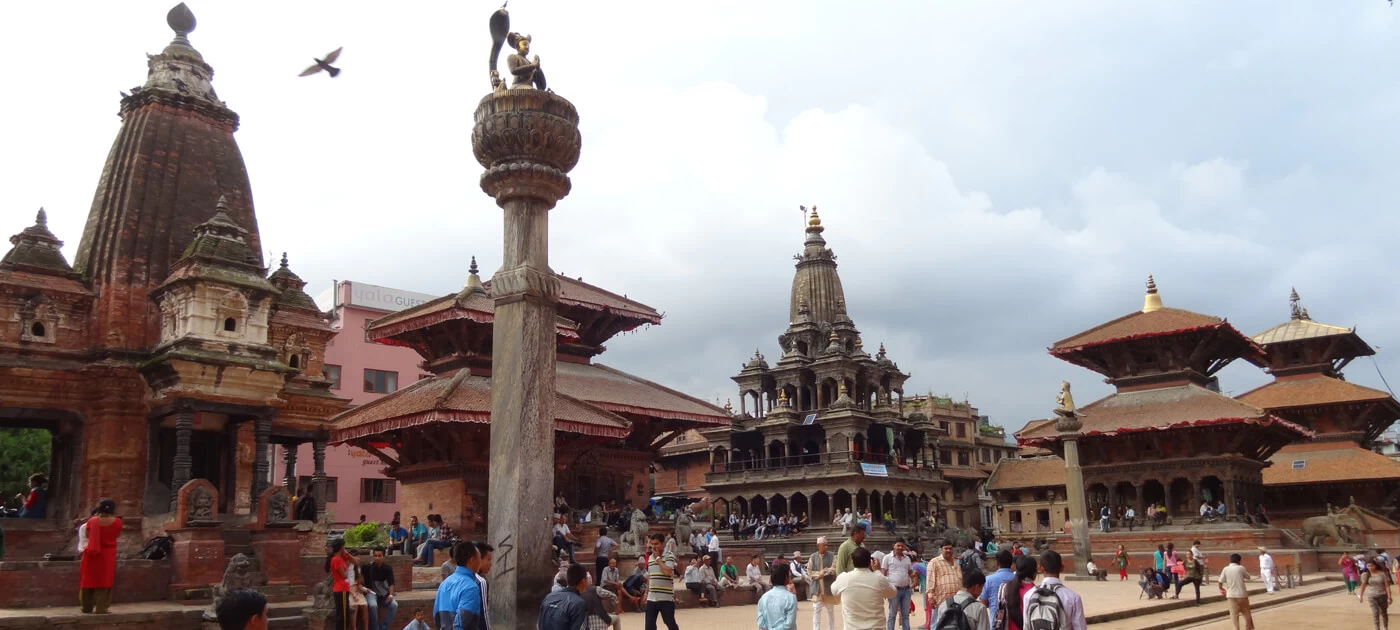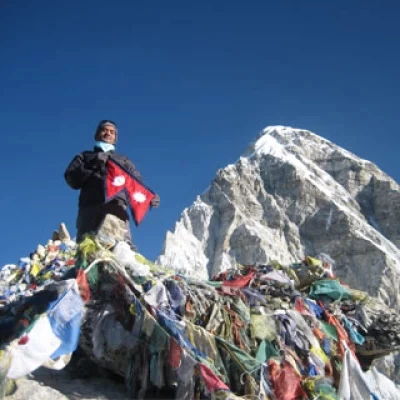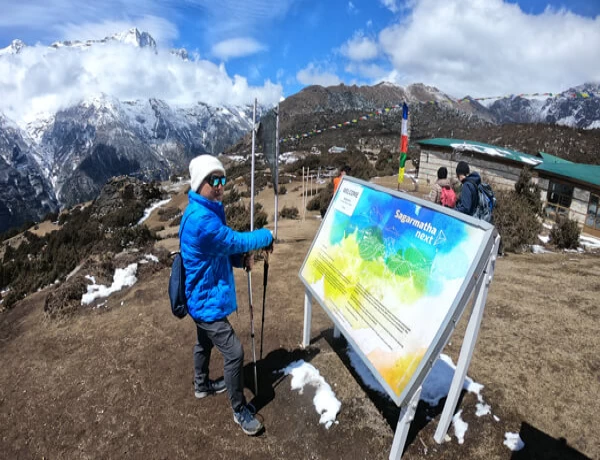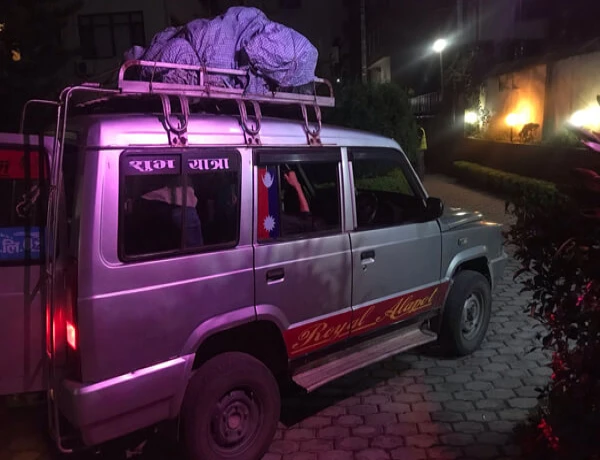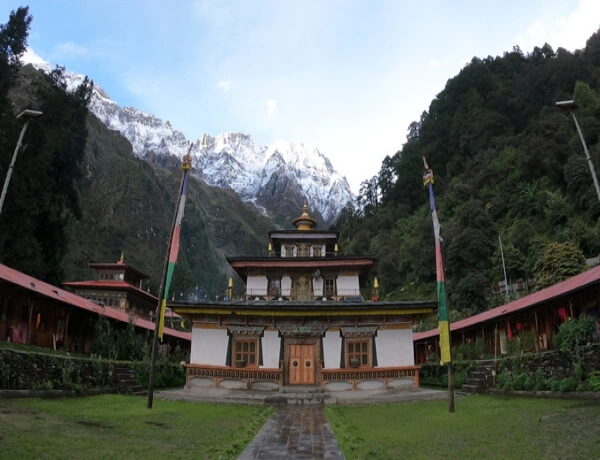Welcome to Kathmandu, the best place to visit in the capital city of Nepal! Situated in the heart of the country, this historic and religious town is not just a city; it's a living museum that beautifully blends ancient traditions with modern charm. With its rich cultural heritage, stunning architecture, and awe-inspiring landscapes, Kathmandu offers a captivating experience for every traveler.
The city is renowned for its seven UNESCO World Heritage sites, each showcasing the region's deep-rooted history and cultural significance. These sites include the iconic Kathmandu Durbar Square,Pashupatinath Temple,Boudhanath Stupa, and Swayambhunath Stupa, among others. Admire the unique architecture, learn about ancient stories and legends, and experience those holy sites' peaceful and spiritual atmosphere. Along with UNESCO sites, Kathmandu is adorned with countless monuments, monasteries, and temples, each with its own unique story to tell.
Beyond the city, the countryside of the Kathmandu Valley unveils a world of natural beauty and cultural treasures. Visit the lush landscapes of Nagarkot, known for its panoramic views of the Himalayas and breathtaking sunrises. Explore the medieval city of Bhaktapur, with its well-preserved architecture and vibrant traditional art forms.
Instead of just staying in a comfortable hotel during your visit to Kathmandu, it's highly recommended that you explore the remarkable destinations the city has to offer. You may visit a historical place in Kathmandu. Each place has its own unique charm and will create unforgettable memories. So, let's embark on a journey together as we unveil the 40 must-visit places in Kathmandu.
The Best Seasons to Visit Kathmandu
Kathmandu welcomes tourists throughout the year, offering something special in every season. While there is no specific time to visit, spring (March to May) and autumn (September to November) are particularly favored for their pleasant weather. The city's attractions and cultural wonders are open year-round, making it a versatile destination.
Each season in Kathmandu has its own distinct character and vibe. Spring brings blossoming flowers and a vibrant atmosphere, whereas autumn offers clear skies and breathtaking mountain views. However, heavy rainfall during the monsoon season (June to August) necessitates extreme caution.
Exploring Kathmandu during the off-season can be a rewarding choice for those looking for a quieter experience with fewer tourists and potentially lower prices. No matter when you visit, Kathmandu will provide a delightful experience, revealing its rich heritage, friendly locals, and boundless charm.
40 Best Places to Visit in Kathmandu.
In this list of the 40 best places to visit, you'll discover a harmonious blend of temples and religious sites, along with breathtaking natural spots and invigorating hiking trails. Categorized for your convenience, each location is conveniently nestled within the Kathmandu Valley. Immersing yourself in the essence of this enchanting city without requiring a significant time investment. Let’s dive into the list:
Best Natural Place to Visit Near Kathmandu
Let’s start with natural places near Kathmandu Valley. Being one of the most chaotic cities in the world, it has lots of natural spots to visit to cheer your soul from the hustling and bustling city. The list goes like this:
1. Phulchowki: The Land Of Snowfall
Nestled in the southern part of Lalitpur, Phulchowki, also known as the "land of snowfall," is best for those craving natural escape. Rising 2,760 meters above sea level, the hill lives up to its name, "Phulchowki," meaning 'hills of flowers.' A hiking trail from the Godawari Botanical Garden leads adventurous souls to this enchanting location.
Phulchowki Hill is adorned with dense forests, offering a sanctuary for diverse wildlife and bird species, making it a paradise for birdwatchers. The hilltop unfolds a breathtaking panorama of the majestic Himalayan range, leaving visitors spellbound. Away from the bustling city, Phulchowki provides a serene environment, inviting visitors to embrace the serene beauty of nature in all its glory.
2. Sundarijal: A Majestic Waterfall of Kathmandu
Sundarijal is a mesmerizing waterfall that is only 15 kilometers northeast of Kathmandu and surrounded by breathtaking natural beauty. The name "Sundarijal" originates from the Nepali words "Sundar," meaning 'beautiful,' and "jal," meaning 'water,' perfectly suitable for the surroundings. This surrounding area offers a serene escape to admire cascading waterfalls and immerse oneself in nature's splendor.
Situated below the Shivapuri National Park, Sundarijal boasts a diverse array of wildlife, making it a heaven for nature lovers. Beyond its breathtaking waterfalls, Sundarijal offers hiking trails to travelers to the Chisapani Dhap Dam and Nagarkot. Shivapuri Hiking trails introduce the wilderness and ascend uphill for panoramic views of the Kathmandu Valley. As an additional attraction, visitors can explore the historic Sundarijal Hydro Plant, dating back to its establishment in 1934.
Amidst this natural paradise, various restaurants offer a delightful culinary experience. It's worth noting that visiting Sundarijal requires a permit, ensuring the preservation of this pristine environment, making it an ideal spot in Kathmandu Valley to visit with friends too.
3. Godawari: National Botanical Gardens.
Godawari National Botanical Garden, formerly known as the Royal Botanical Garden, stands as a testament to its rich natural heritage. Established in 1962 by King Mahendra, this verdant oasis covers an impressive expanse of 40 hectares. Initially designed by two British architects, the garden serves as both a scientific research center for native plants and a breathtaking display of nature's wonders.
The National Botanical Garden boasts an enchanting collection of various flowers and plants, showcasing the country's diverse botanical treasures. Godawari offers a serene and inviting ambiance, making it the perfect escape to spend quality time with loved ones.
Popular among families for picnics and couples seeking romantic getaways, this scenic setting promises a new experience in nature. Whether strolling through the vibrant gardens or simply embracing the tranquility, Godawari National Botanical Garden attracts visitors with its botanical wonders and provides a retreat from the hustle and bustle of everyday life.
4. Chandragiri Hills: Where Scenic Beauty Meets Serenity.
Chandragiri Hill stands tall at an elevation of 2,551 meters in the southwest of Kathmandu, offering a captivating blend of religious, historical, and natural significance. This majestic hill holds a special place in Nepal's history, as it was from here that King Prithivi Narayan Shah made his entry into the Kathmandu Valley, leading to the unification of Nepal.
At the hill's summit lies the Bhaleshwor Mahadev Temple, dedicated to Lord Shiva, attracting devotees as well as visitors alike. The panoramic view from the hilltop presents a breathtaking spectacle of various Himalayan ranges stretching across the horizon, including Mt. Everest, Manaslu, Dhaulagiri, and Gaurishanker Mountain. Eight out of ten of the world's highest mountains can be seen in clear weather. Additionally, the hill provides a scenic expanse of the Kathmandu Valley below.
Aside from its historical and religious significance, Chandragiri Hill boasts abundant natural diversity. The hill is easily accessible through both cable cars and roadways, along with its rich heritage and stunning vistas, making it an ideal destination for travelers seeking an unforgettable escape. If you are looking for a luxury holiday with an amazing mountain view, you may stay overnight at Chandragiri Hills Resort on the top of the hill.
5. White Monastery: A Serene Haven of Spiritual and Natural Beauty.
The monastery, also known as White Gumba or Druk Amitabh Monastery, stands as an architectural marvel painted in brilliant white, following the traditional Tibetan style. The monastery is adorned with Thangka paintings and statues, releasing tranquility and spiritual energy. Located on the western outskirts of Kathmandu, approximately 5 kilometers away from the Swayambhunath Stupa, the White Monastery offers a serene retreat away from the bustling city. 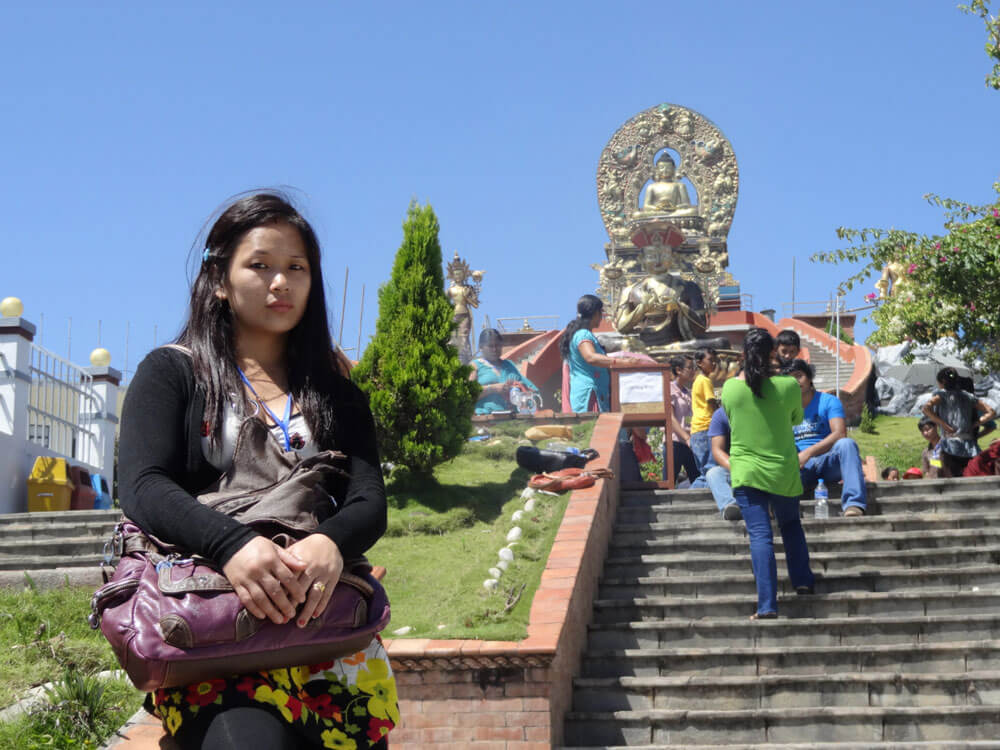
Nestled amidst a serene pine forest, this divine sanctuary provides an ideal escape for both nature enthusiasts and seekers of spiritual retreats. Accessible by road, the White Monastery also beckons adventurous souls to embark on a scenic hiking trail, adding to the allure of the journey. The monastery offers a panoramic view of the Kathmandu Valley, creating a breathtaking backdrop for meditation and introspection.
6. Champadevi Hill: A Divine Hike with a Panoramic View.
Nestled on the southern side of Kathmandu, Champadevi Hill is a renowned destination located in Hattiban, Pharping, before reaching Dakshinkali. It is famous for its captivating hiking trail leading to the Champadevi Temple, situated atop the hill. This picturesque location is named after the temple and rewards visitors with a mesmerizing view of the Kathmandu Valley.
The hiking trail to Champadevi Hill is well-maintained, offering a serene environment away from the crowds, making it an ideal escape for nature enthusiasts and peace-seekers. Along the journey, one can also explore the Dudjom Namdrol Choeling Monastery, adding to the spiritual and tranquil ambiance of the experience. Champadevi Hill beckons adventurers to immerse themselves in its natural beauty and spiritual serenity, leaving them with unforgettable memories of this enchanting hillside retreat.
7. Shivapuri National Park: Exploring Nature’s Treasure near Kathmandu.
The words “Sivapuri: become two different words: Shiva + Puri, where Shiva is representative of Lord Shiva and Puri means city/town in Sanskrit. So, it means this place is the city or homeland of Lord Shiva. It is true; Shivapuri and Pashupatinath temples are near each other. Because it is home to numerous Hindu holy sites and many divine beings are accustomed to staying in this holy land, Nepal is known as the Deva Bhumi, or "Land of the Gods." Nepal is the land of Shiva and followers of Shaivism, just as south India is a fertile place for Visnu and Vaishnavism.
When it comes to the best natural places to visit near Kathmandu, the list would be incomplete without Shivapuri National Park. Situated on the western side of Kathmandu, the National Park spans 159 square kilometers, making it a remarkable natural treasure close to Kathmandu city. Embracing a diverse range of flora and fauna, the park is particularly renowned for its exceptional bird-watching opportunities, drawing in enthusiasts around the globe.
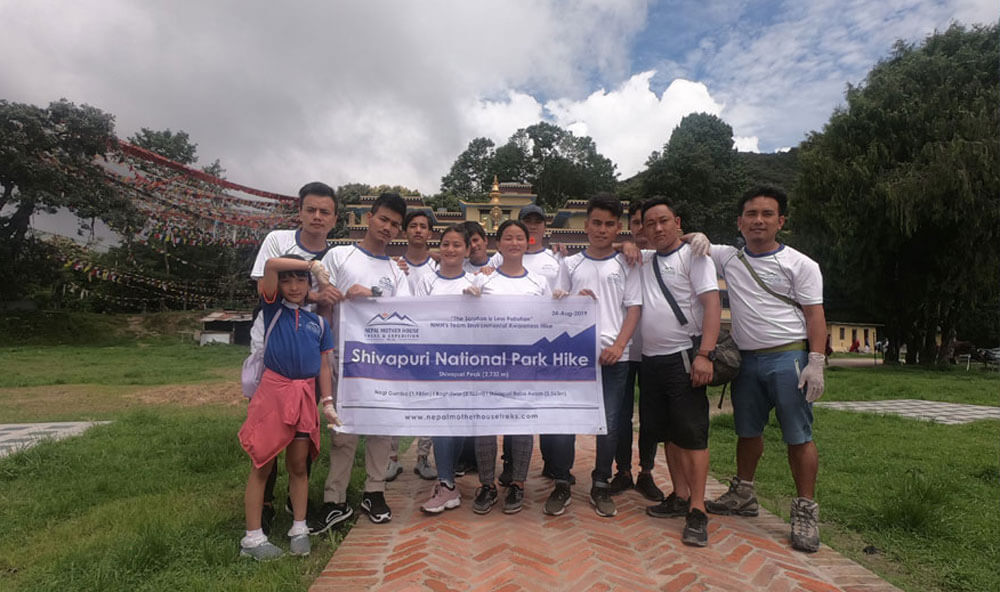
Shivapuri National Park has numerous oases and water resources, creating a peaceful and tranquil atmosphere perfect for those seeking natural therapy. The various hiking trails share enchanting landscapes and lush forests. The most popular hike to Shivapuri Peak (2,732 m) through the Panimuhan at Hari Har Budhanilkantha temple and Nunnery Nagi Gumba. Upon reaching the hilltops, visitors are rewarded with breathtaking views of the Himalayan range as well as the panoramic beauty of the Kathmandu Valley. A haven for nature lovers and peace seekers alike, Shivapuri National Park offers an unforgettable experience amidst its pristine wilderness.
8. PIA Memorial Park: A Place of Reverence and Memory.
PIA Memorial Park, named after Pakistan International Airlines, stands as a poignant tribute to the victims of an unfortunate plane crash. Nestled in the tranquil countryside of Lalitpur, in Lele, the park's secluded location ensures a serene atmosphere, offering solace and peace. For visitors looking to get away from the bustle of settlements, the park's lush pine forest offers a relaxing setting.
The park's well-maintained grounds feature various thoughtful designs, and the pathways are paved with stones, adding to its serene ambiance. As visitors wander through this memorial, they will catch sight of colorful prayer flags fluttering in the breeze, a symbol of hope and remembrance. PIA Memorial Park serves as not only a place of reflection but also a sanctuary of natural beauty, inviting visitors to embrace nature and the memories of those beautiful souls.
9. Lakuri Bhanjyang: A Panoramic Viewpoint of Bliss.
Lakuri Bhanjyang, located in the picturesque countryside of Lalitpur, offers a serene escape from the bustling city life. This scenic destination is renowned for its breathtaking viewpoint, affording visitors stunning vistas of the majestic Himalayan peaks in the distance. Lakuri Bhanjyang offers a tranquil setting that is perfect for relaxing and taking in the peace of nature thanks to its surrounding lush forests.
The hilltop's charm lies in its panoramic view of the sprawling Kathmandu Valley and the quaint villages nestled on the other side. Its natural beauty makes it a perfect spot for camping and enjoying dry picnics with loved ones. Lakuri Bhanjyang's unique blend of tranquility, sweeping views, and lush surroundings creates an unforgettable experience.
10. Chaap Bhanjyang—Junction of Hikers’.
Chaap Bhanjyang, sandwiched between the majestic peaks of Chandragiri Hill and Champadevi Hill, offers adventurers a short and delightful hike from Machhegaun. This idyllic destination can only be reached through hiking, winding its way amidst enchanting forests, bestowing visitors with a tranquil environment.
The area offers a charming camping experience, with small accommodations providing food and cozy fire camps, perfect for those seeking a rustic escape into nature's embrace. For the more adventurous, Chaap Bhanjyang serves as a gateway to further hiking opportunities, with the option to venture towards Chaap Dada and explore alternative trails that lead to hidden treasures within this captivating landscape.
Kathmandu is the best place to visit for spiritual sensations.
Nepal is a holy and spiritual land. Also, Kathmandu is full of temples and monuments. Here are some religious sites to visit in Kathmandu for spiritual retreats:
11. Dakshinkali: The most famous Shakti peetha dedicated to Goddess Kali.
Dakshinkali Temple, situated in Pharping village, approximately 22 km from Kathmandu, is a renowned Hindu pilgrimage site. This revered Shakti Peetha is dedicated to Goddess Kali, embodying her fierce and protective energy. For devout Hindus, the temple holds immense religious significance.
The name "Dakshinkali" carries a dual meaning: "Dakshina" refers to the offerings made to priests, and "Dakshin" means south, as the temple is situated in the southern direction. The temple's origin is rooted in ancient mythology, with diverse tales attributing its establishment. During the Dashain festival and other days, especially Saturday, sacrifice many goads, buffalo, and cocks to fulfill human desire.
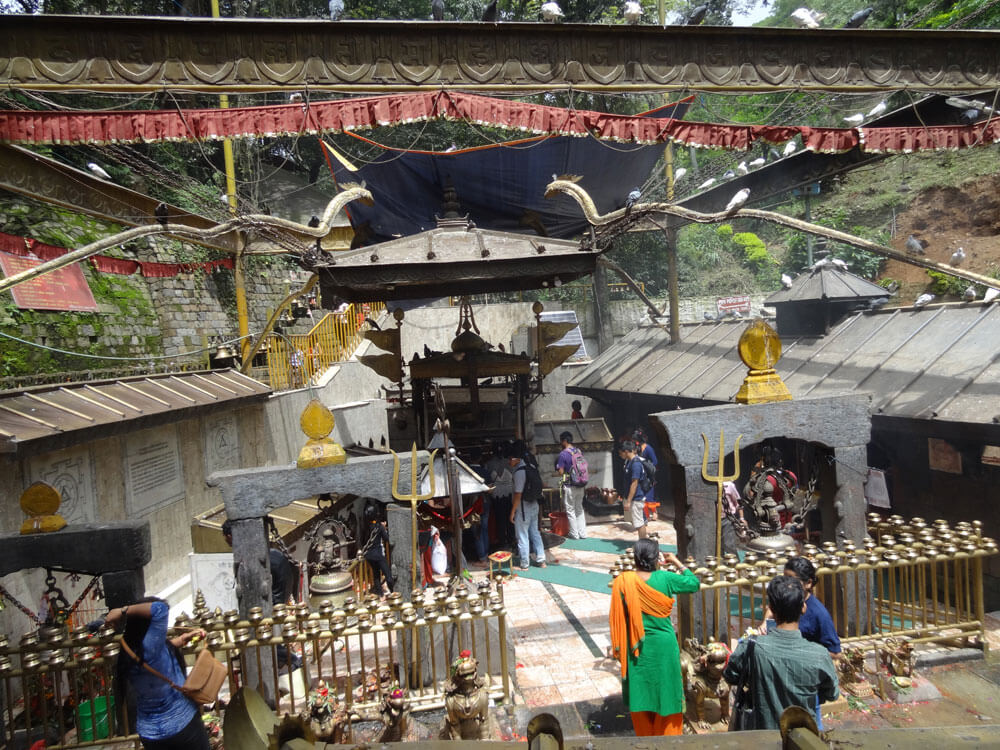
Beyond its spiritual allure, Dakshinkali Temple offers captivating hiking trails, making it an ideal destination for nature enthusiasts. The temple's surroundings boast breathtaking natural vistas, making it a perfect spot for picnics amidst lush forests teeming with an array of bird species, creating an enchanting experience for visitors seeking solace in nature's embrace and spiritual journey.
12. Asura and Yanglesho Cave: Where the Great Tantric Guru Rinpoche Meditated.
Located in Pharping near Dakshinkali Temple, Asur and Yanglesho Caves hold profound significance in both Buddhist and Hindu traditions and are deeply connected with Guru Rinpoche's spiritual journey. The caves served as sacred abodes where Guru Rinpoche meditated, spending summers in the Yanglesho Cave and winters in the Asura Cave. It is believed that Guru Rinpoche attained his Mahamudra realization within the depths of these caves.
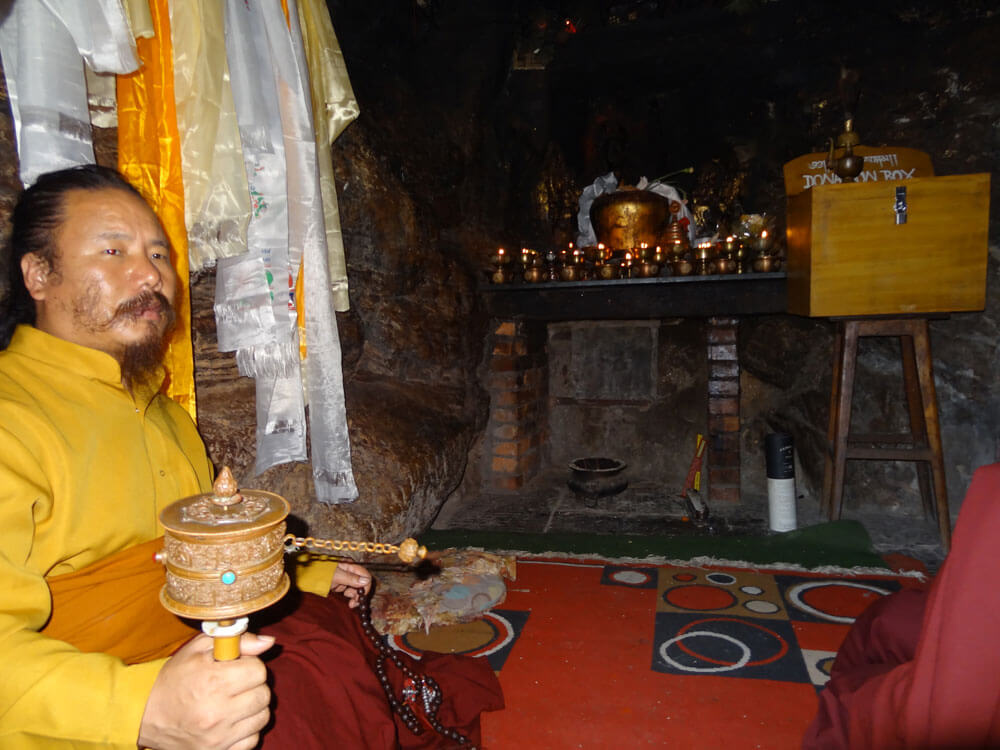
These caves bear great religious value, attracting both Buddhist and Hindu devotees seeking spiritual solace. The Asura Cave is adorned with the handprint of a yogi, believed to be Chime Dorje's, adding to its mystique. Visiting Asura and Yanglesho Caves offers an enchanting glimpse into Guru Rinpoche's legacy and provides a spiritual journey in the 11th century.
13. Kopan Monastery: Find Your True Self.
Nestled atop the captivating Kopan Hill, the majestic Kopan Monastery welcomes every traveler with its grandeur, displaying exquisite Tibetan architectural charm. Within its sacred precincts, numerous stupas, chortens, and mani adorn the surroundings, offering a serene ambiance that resonates with the essence of Buddhism.
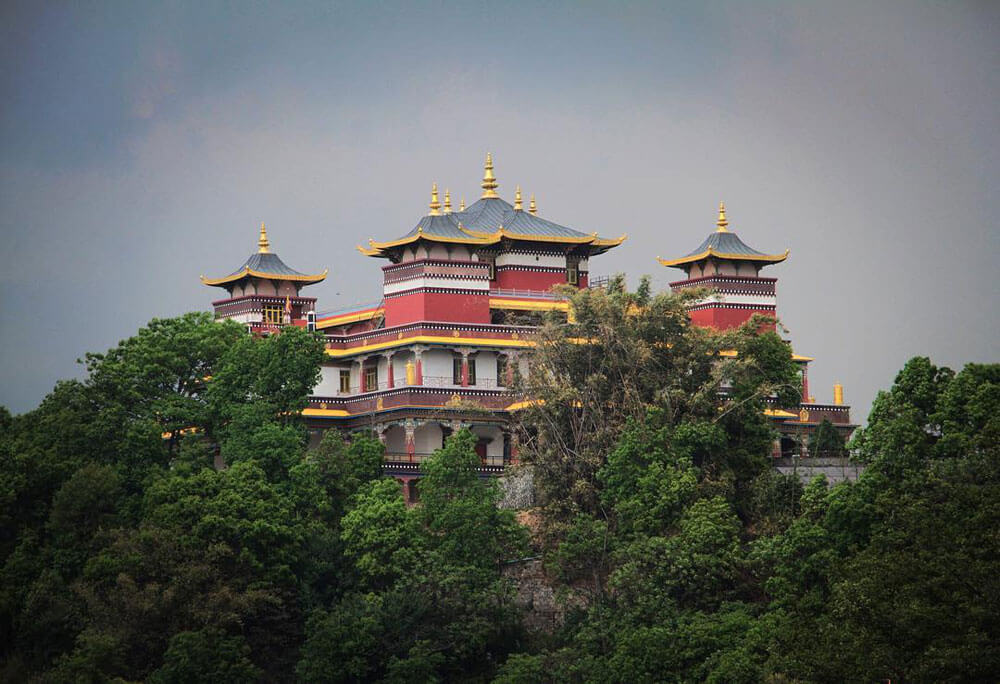
Visitors can enjoy breathtaking panoramic views of the bustling Kathmandu city below from their elevated position on the hill, where Bodhi trees predominate in the tranquil setting. Kopan Monastery provides various Buddhist courses and retreats for those embarking on a transformative journey of self-discovery and enlightenment. For those seeking spiritual retreats, the Kopan Monastery serves as a harmonious sanctuary, inviting visitors to immerse themselves in its divine aura.
14. Bajrayogini Temple: A Revere Abode Worth Discovering.
Situated northeast of the Kathmandu Valley in charming Sankhu village, the Bajrayogini Temple holds profound significance in both Buddhism and Hinduism. Vajrayogini is a Tantric Buddhist deity from the 11th century who represents the path leading to female Buddhahood. Bajrayogini, aka Vajrayogoni, derived from the Sanskrit words Vajra, which means “diamond” or “thunderbolt,” and Yogini, is a female Yogi, or Yoga practitioner. There are four most popular Vajrayogini in Kathmandu (Sankhu Vajrayogini, Pharping Vajrayogini, Bijeswari Vajrayogini, and Guhyeshwari Vajrayogini).
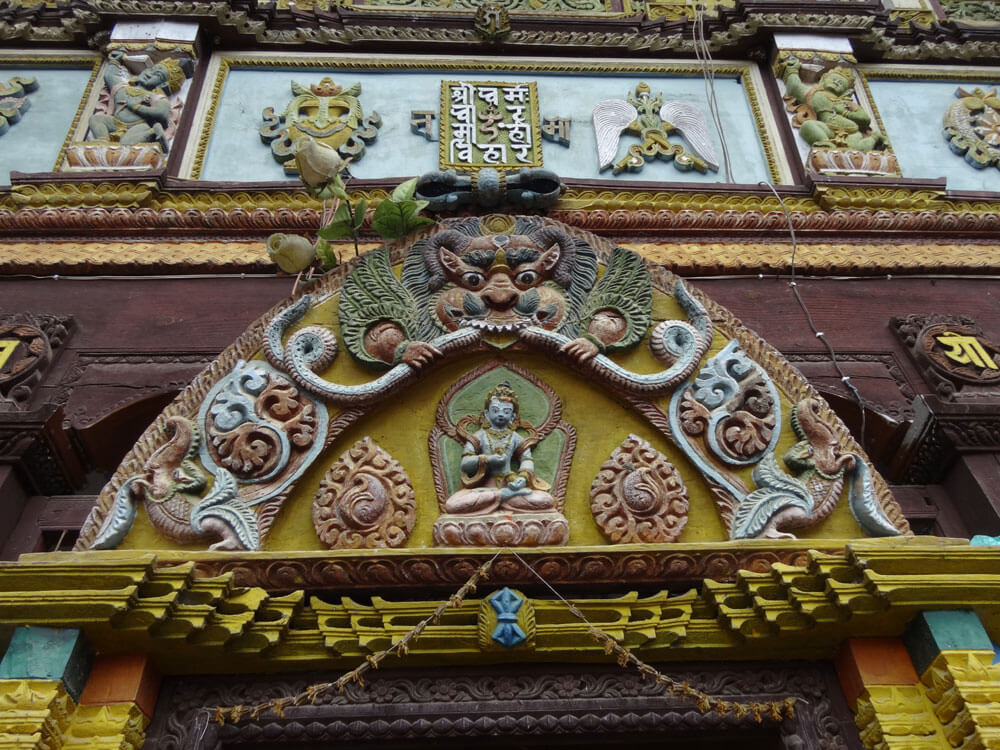
Built under King Pratap Malla in the 16th century, this architectural gem showcases exquisite Newari craftsmanship. Adorned with numerous important statues of god, the temple attracts devotees seeking blessings.
One of the temple's highlights is the vibrant Bajrayogini Jatra, an annual chariot festival that draws a lively celebration of culture and devotion. Beyond the temple's hallowed grounds, visitors can explore the scenic attractions of Sali Nadi (river) and the legendary Milarepa Cave, adding to the spiritual allure of the site.
Also known as the Bodhisattva Temple in Buddhism, it is dedicated to the female Tantric Buddha, Vajrayogini. Bajrayogini Temple stands as a harmonious testament to the coexistence of Buddhist and Hindu traditions, inviting all to revel in the rich tapestry of history, devotion, and divine beauty that thrives within its sacred walls.
15. Budhanilkantha Temple: The Divine Lord Vishnu (Hari) and Shiva (Hara).
Budhanilkantha Temple holds immense importance in Hinduism as a revered sanctuary dedicated to Lord Vishnu. The name "Budhanilkantha" translates to "old blue throat" in Sanskrit, the title bestowed upon Lord Shiva by the gods after he courageously consumed poison to save the world. Hindus and Buddhist devotees from around the globe flock to this sacred site, seeking blessings and divine grace.
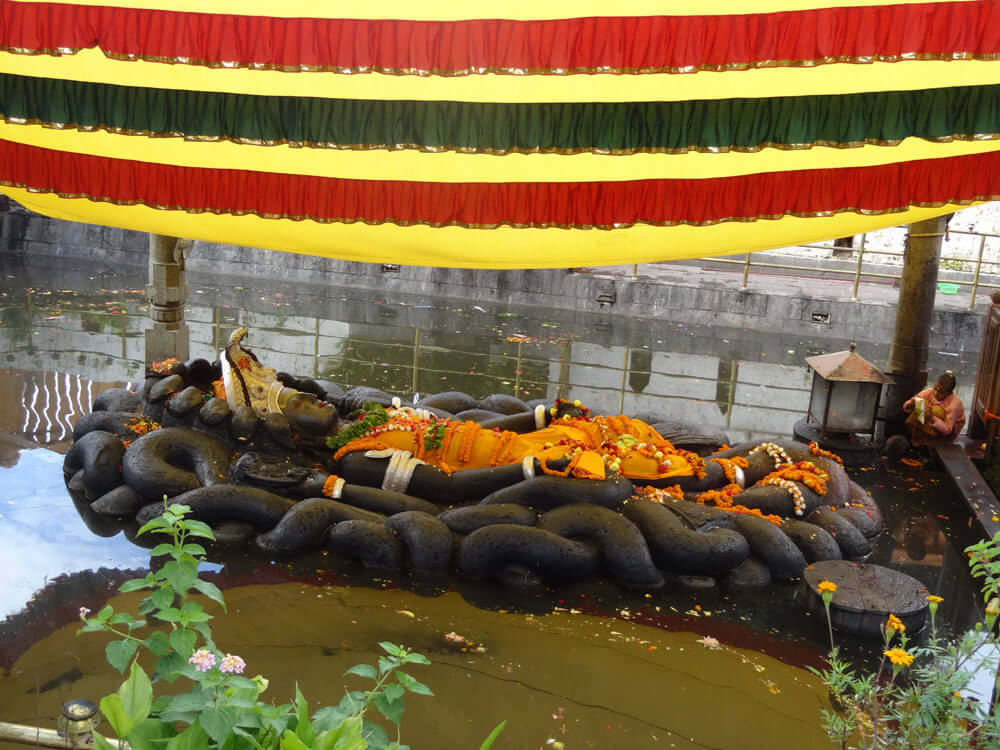
According to the Hindu epic, the spiritual practice religious king named Suryaketu used to rule at Shivapuri Nagar/city in the Dwapara Yuga/Era. He was a devotee of Lord Vishnu Narayana and Adobe Shiva. Every day, he used to worship Hari (Bisnu) and Hari (Shiva) to visit Kedarnath and Badrinath before his meals. Years pass; King Suryaketu becomes older and physically difficult to visit the Kedarnatha (Hari/Bisnu) and Badrinath (Har/Shiva) Dham each day. He prays to God, as I am not able to visit you every day due to my physical condition. I will finish this physical body in my hometown without taking food and chanting your name. Then, God became very happy hearing his request and promised to the King to appear in your hometown the next morning. You don’t need to come here again to pray Hari and Hara. King returns this Nagari. Then God himself called Biswakarma to make the most attractive statues of Lord Bisnu and Adobe Shiva anywhere in the world. After consuming the Sudharas from Nagalok, Bhimsen (who was as powerful as 10,000 elephants) erected the statue. King Suryaketu saw the statue as neither Kedarnath (Hari/Bisnu) nor Badrinath (Har/Shiva), so he argued with God that it was not a form of god. Then God became angry and cursed the King, “From today on, the King's family can’t visit me for prayer; if anyone tries to visit me, they and their family will vanish.”. So, till now, the King and his family have not visited the Budhanilkantha Temple. Later on, the great natural hazard finished the Dwapara Yuga/Era and buried the entire statue in water and mud.
An elderly farmer named Nilkantha discovered a stone with bloody statues on his farm during the Kali Yuga, where this stone was used to double the crops. The old farmer was afraid of harming God's body with blood, so he prayed to God and forgave to make all these things. God appeared and said, “Don’t be afraid, Nilkhantha; you have done nothing to me; you have raised me and given me a name by your name, "Nilkhantha,” to know me in this physical world and do daily praying ceremonies under 16-year-old Brahman. As the farmer was old, Buddha, Respectable, or Horner later became the “Budhanilkantha” in people's tongues. Lord Vishnu has four hands with Shankha, Chakra,Gadha, and Padhma/Kamal/lotus flower, and Shiva has Naag on his neck and Bhasma gola. But God Shankha, Chakra, Gadha, Bhasmako Gola, and a snake on his neck can all wear this statue. So, the name is Budhanilkantha, but the appearance is Hari+Har, where both Bisnu and Shiva are at the same statue. The Hari Har used to go to Apsara Ghat to play with the angle from heaven and back to the same place.
One day, King Pratap Mall, who was a great devotee of God, tried to visit Budhanilkantha for Darshyan. While he got to Apsara Ghat, a serpent from the crown protector of Budhanikantha came on his way and refused to visit him. Then King Pratap Malla became angry and cursed Nag to become bland; he could not find a way to return the throne of the Budhanilkantha. So, now, we can see only eleven serpents on the crown of the Budhanilkantha. After that, God decided not to appear as an alive form in this Kali Yuga, and he returned to the statue of Budhanilkantha. For this curiosity of this physical world, God's real face can also be seen in the water. This is a great challenge to the modern sense of how to reflect the real face of Budhanilkantha into the water as well!
According to the Nepali Kala by Balkrishn Sama (2018 BS Nepal Pragya Pratisthan), there is a statue of the Akshobhya Buddha on the head of Narayan. So, Buddhism believes that there is a Lokeswar named Budhanilkantha among the 108 Abalokiteswar.
The temple's main attraction is the awe-inspiring stone statue of Lord Vishnu lying on a snag in a holy pond. Legends believed that the statue formed naturally without human intervention, making it an extraordinary symbol of divine presence and power.
Situated on the northern side of Kathmandu, amidst the enchanting landscape of Shivapuri Hill, Budhanilkantha (a 22-foot-long and 11-foot-wide statue) Temple offers not only a sacred pilgrimage but also an immersive experience in the rich tapestry of Hindu mythology and spirituality.
16. Om Shree Trikuta Gurudham: Nourishing the Spirit.
Om Shree Trikuta Gurudham, a renowned spiritual abode in Nepal, is dedicated to Hinduism. The Dham is more focused on Swogyan Shikshya, Sadhana, and Mahayagya, where devotees embark on a journey of self-discovery, meditation, awakening, and various rituals.
Under the guidance of Guru Param Gurudev, Om Shree Trikuta Gurudham offers blessings for health and good luck, inviting seekers to bask in the transformative power of spirituality. The term "Trikuta" symbolizes a spiritual sensation where devotees find relief and inner peace. This sacred place enables individuals to delve into the depths of self-awareness with divine energies through meditation and rituals.
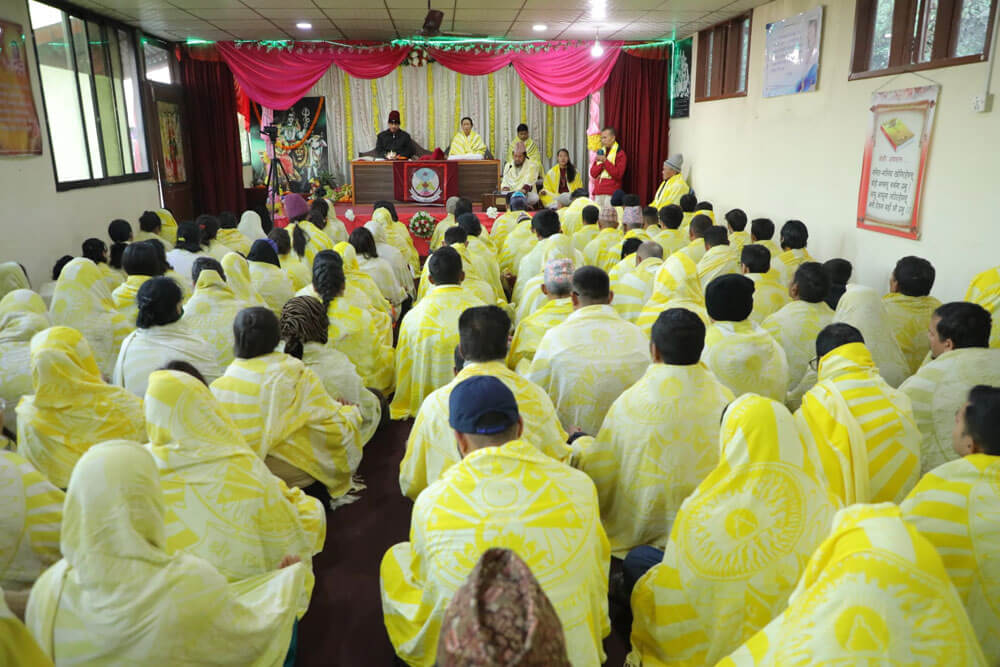
Every festival like Guru Purnima, Dasha Mahavidya Janani Sadhana, Saune Sakaranti, Nag Panchami, Krishna Janmashtami, Haritalika Teej, Janai Purnima,Dashain, Tihar Yampanchak Sadhana, Chhath, Chandramrit Sanjiwani Sadhana, Thulo Ekadashi, Maghi Sakaranti, Shree Panchami, Maa Swasthani Brata Katha Sadhana, Maha Shivaratri, Phagu Purnama/Full Moon, Hanuman Jayanti, Buddha Jayanti, Sadhguru Shri Satyanand Maharaj Samadhi Divas, and Param Guru Avataran Diwas tec. every festival has special Sadhana guidance by Param Guru Trikuteshwaranand for one day to 10 days according to the festival. Where you can have a great spiritual experience and awaken your Brahmatattwa. To participate in this Sadhana, you must have taken part in a week-long Swogyan Shikshya, a self-realization class.
Likewise, Om Shree Trikuta Gurudham Nepal organizes precious Sadhana such as Shree Rudram Brahm Vidhya (in which Yoga liberates us from the cycle of birth and death), Ultimate Divine Healing (expert knowledge of treatments based on the principle of Trit and the most confidential methods), Ultimate Divine Yog (to achieve ultimate fulfillment and the state of nirvana), and Ultimate Divine Meditation (for everyone to effortlessly attain spirituality, wisdom, and supreme grace).
Om Shree Trikuta Gurudham is a beacon of spiritual enlightenment, fostering a profound connection between individuals and the divine and creating a transformative experience that resonates with devotees far and wide.
UNESCO Heritage Sites to Visit in Kathmandu Valley
The list of best places to visit in Kathmandu is incomplete with UNESCO Heritage Sites. Below, we have 7 UNESCO World Heritage Sites in Kathmandu Valley:
17. Boudhanath Stupa: The Mandala of Peace and Enlightenment.
Boudhanath Stupa, a magnificent structure with a rich tapestry of origin stories, holds diverse mythologies in both Newar Buddhist and Tibetan Buddhist traditions. Its history traces back to the Lichhavi period, adding to its historical significance. Adorned with a mandala design, the stupa boasts a mesmerizing aerial view that resembles a sacred mandala pattern.
The melodious chants and incense-filled atmosphere that greet visitors as they approach the stupa create a mesmerizing spiritual atmosphere. The site also features the revered Jamchen Lhakhang monastery, further enriching the spiritual atmosphere.
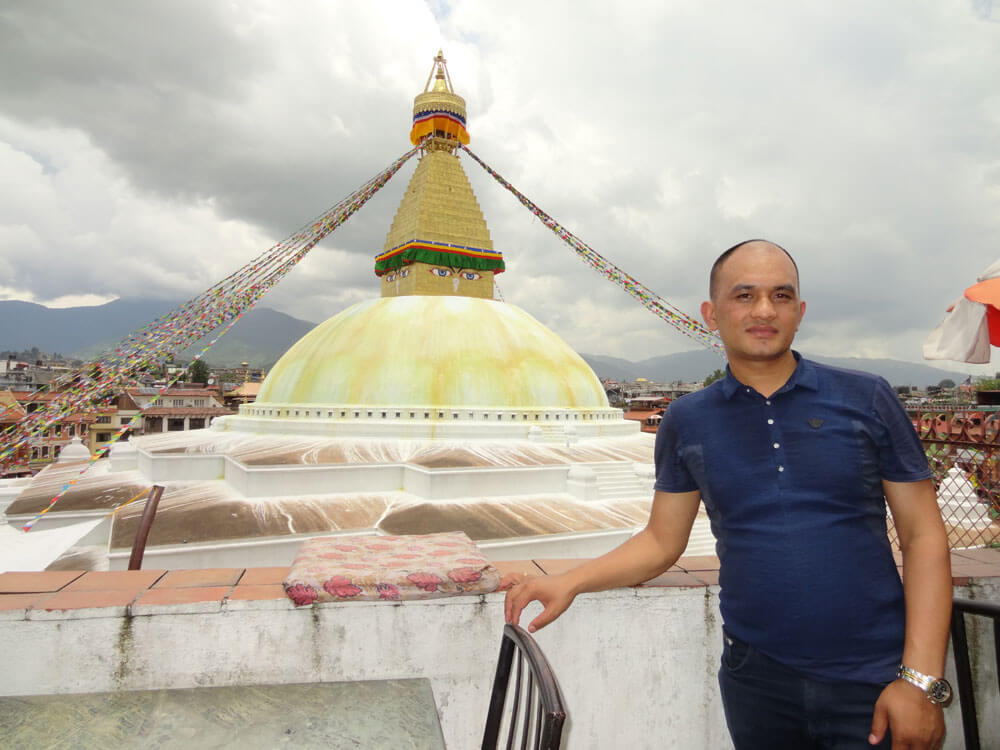
Boudhanath Stupa offers a delightful culinary experience, especially for those eager to try genuine Tibetan cuisine, given the abundance of restaurants surrounding it. This ancient and sacred stupa stands as a testament to Nepal's religious and cultural heritage, drawing pilgrims and travelers alike to immerse themselves in its divine aura and explore the diverse facets of Buddhist traditions.
18. Pashupatinath Temple: The forehead of Lord Shiva.
Pashupatinath Temple, a revered religious site, holds profound importance in Hinduism. Situated alongside the holy Bagmati River, it serves as a significant destination for cremation rituals for departed souls. Often referred to as the "forehead of Lord Shiva," the temple's architectural grandeur and sacred atmosphere evoke a sense of divine presence.
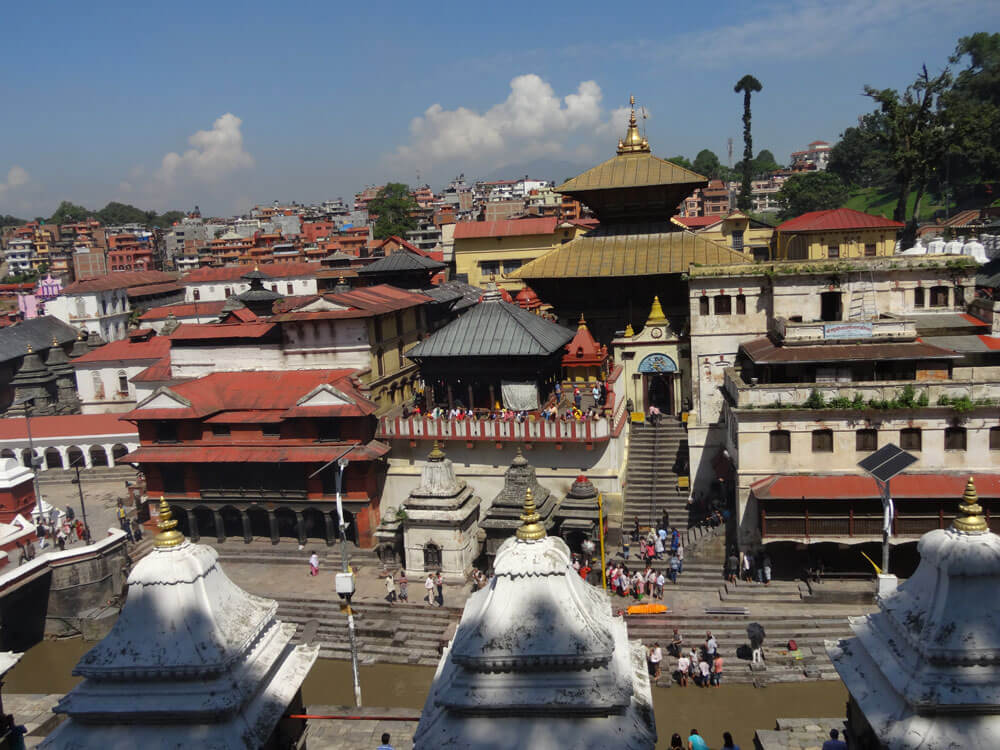
Mrigasthali Deer Park, where visitors can immerse themselves in the tranquil ambiance amidst playful deer. The site also hosts numerous other religious attractions, providing a comprehensive spiritual experience for pilgrims. In recent times, the Sandhya Arati ceremony has gained immense popularity, captivating visitors with its enchanting display of devotion and reverence.
Pashupatinath Temple remains a timeless symbol of Nepal's cultural and religious heritage, serving as a sacred haven for the faithful and an emblem of devotion to Lord Shiva and the divine.
19. Swambhunath Stupa: The Eye of Kathmandu Valley.
Located on the hill of Swayambhu, Swayambhunath Stupa, also fondly known as the "Monkey Temple" by tourists, sprawls over a vast area adorned with lush forests, numerous stupas, colossal statues, and playful monkeys. The stupa holds a significant Maha Chaitya and boasts monuments dating back to the 16th century.
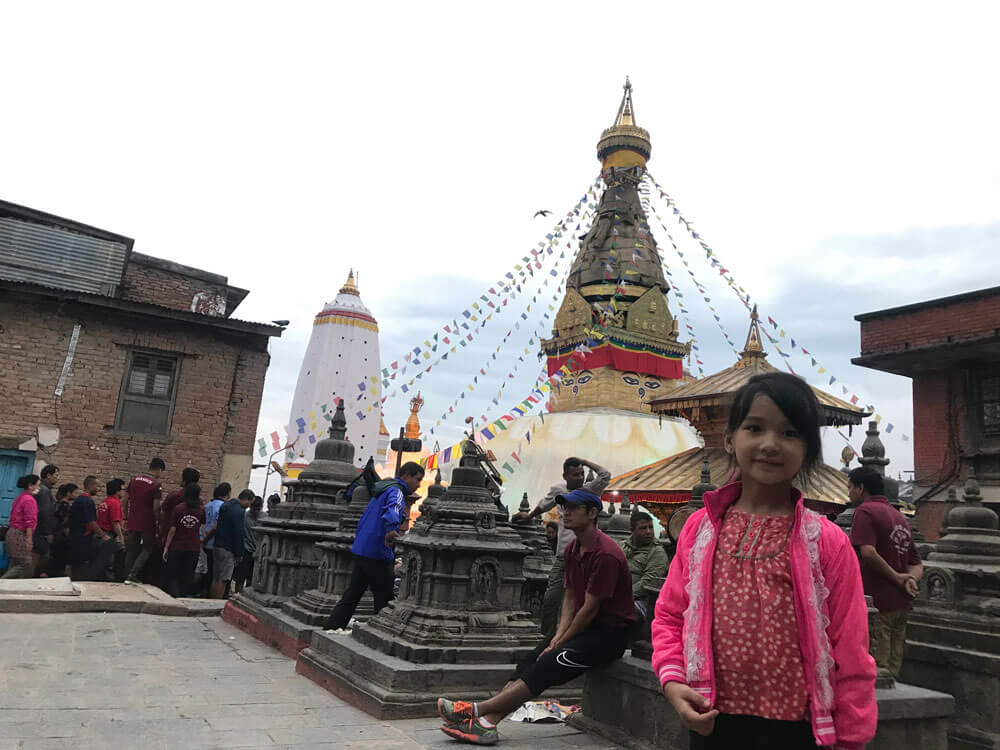
Countless chortens and mani adorn the sacred site, symbolizing its deep-rooted religious importance for both Hindus and Buddhists. Swayambhunath Stupa stands as a timeless and revered symbol of spiritual heritage, attracting visitors and pilgrims alike to bask in its divine aura and partake in the age-old rituals and serenity of this ancient sanctuary.
20. Bhaktapur Durbar Square, where timeless heritage unfolds.
Bhaktapur Durbar Square stands as a remarkable testament to the city's commitment to preserving its pristine palace dating back to the 14th century. The square boasts unique architecture that captivates visitors, with the 55-window palace being a central attraction. Other aspiring landmarks include the Nyatapola Palace, numerous temples, and the Pottery Palace.
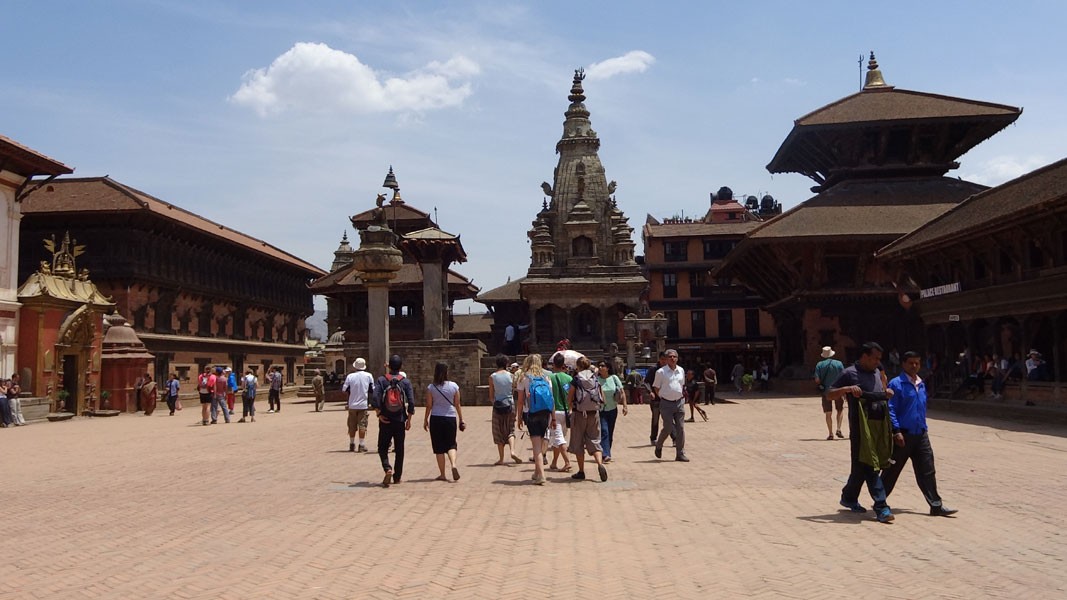
Amidst the historical splendor, be sure to indulge in the delectable Juju Dhau, known as the "king of curds," for a delightful culinary experience. Bhaktapur Durbar Square offers a mesmerizing journey through time, where ancient grandeur meets cultural treasures, leaving visitors in awe of its timeless charm.
21. Patan Durbar Square: The Charm of Newari Craftsmanship
Patan Durbar Square, a wonder of Newari architecture dating back to the 16th century, is a treasure trove of cultural heritage. Nestled in the heart of Lalitpur, Mangal Bazaar, this vibrant square boasts an array of exquisite temples, with the Krishna Mandir standing as a major attraction. The palace itself is a sight to admire, featuring the stunning Keshar Narayan Chowk, Mul Chowk, and Sundari Chowk, each a testament to the architectural brilliance of the era.
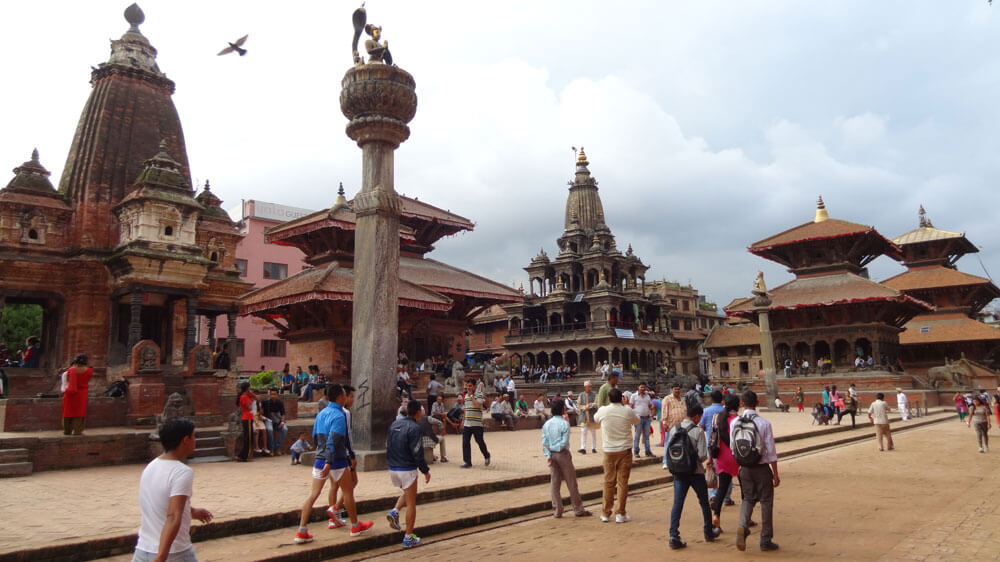
Patan Durbar Square's captivating ambiance makes it the perfect spot to hang out, allowing visitors to immerse themselves in the rich history and culture. With its historical significance, Patan Durbar Square offers an unforgettable journey through time, where ancient traditions and artistic mastery converge to leave a lasting impression on all who behold its timeless charm.
22. Kathmandu Durbar Square: A Tale of Royal Legacy.
Kathmandu Durbar Square, also known as Basantapur Durbar Square, stands as a cherished heritage of the nation, steeped in rich history and cultural significance. Hanuman Dhoka, the focal point of the square, serves as a representation of the bravery of Nepali soldiers. Adorned with many important monuments and temples, the square holds the remarkable Kasthamandap, a colossal temple constructed entirely from a single tree.
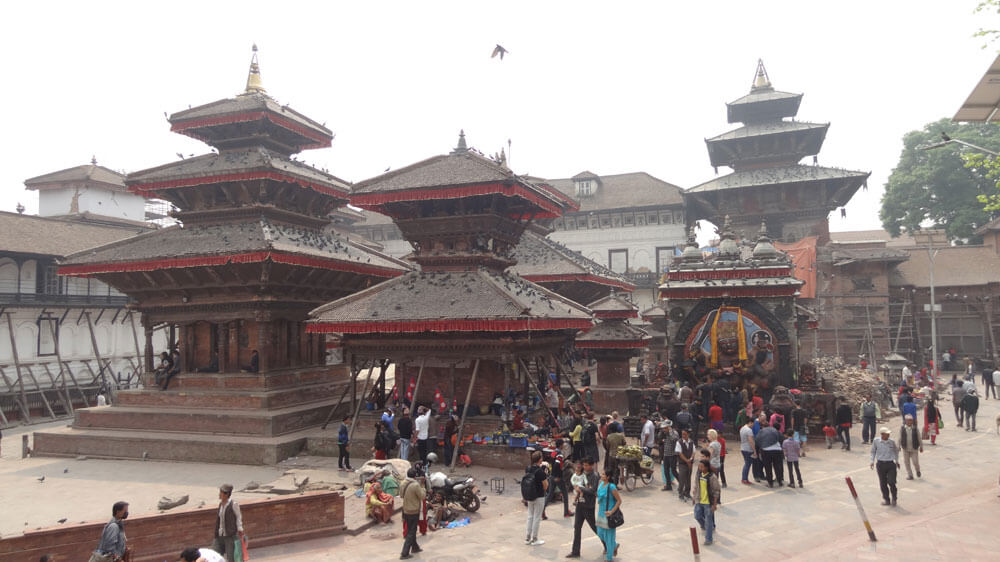
Although the devastating earthquake of 2015 left its mark on Kathmandu Durbar Square, extensive efforts have resulted in the reconstruction of most of its precious monuments. One of the major attractions is the Nautalle Durbar, a nine-story palace representing the unification of Nepal. As visitors wander through this iconic square, they are transported back in time, experiencing the grandeur and cultural legacy that continues to resonate in the heart of Kathmandu. If you have some spare days in Kathmandu after the trek, you may do a day Kathmandu Sightseeing Tour with a Professional Tour Guide before your home destination.
23. Changu Narayan Temple: The Oldest Scared Sanctuary.
Changu Narayan Temple, one of Nepal's oldest and most revered temples, stands as a timeless dedication to Lord Vishnu. Its significance is equally profound in both religious and historical contexts. The temple's captivating origin story traces back to the beginnings of Nepal, shrouded in the mysteries of an ancient period.
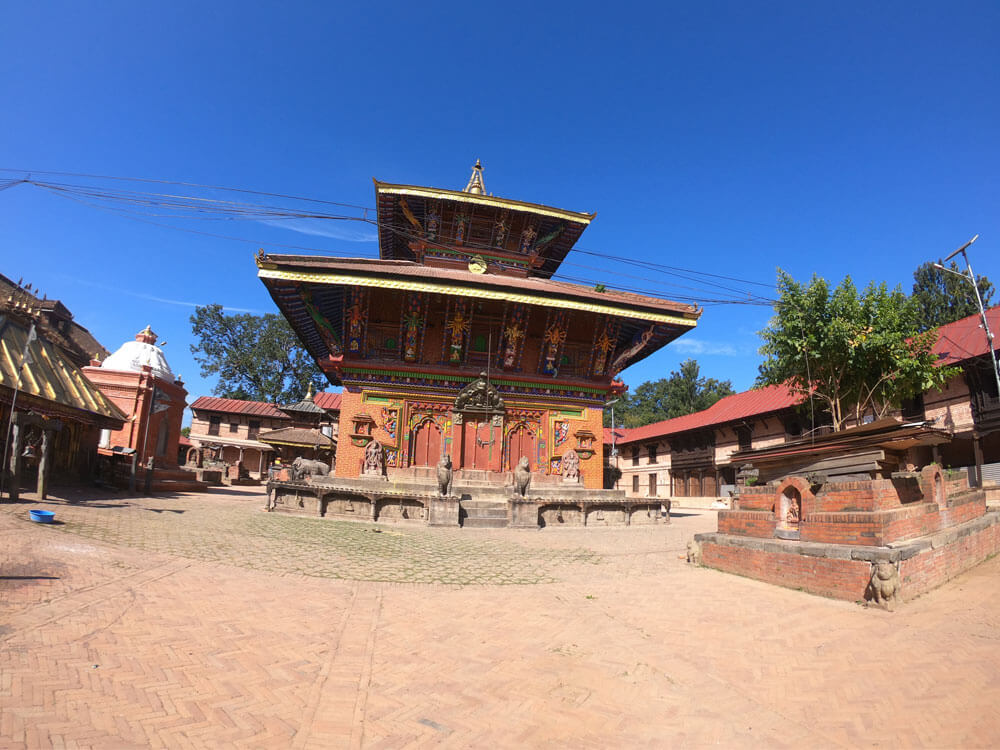
Stepping into Changu Narayan Temple feels like a journey through history, with its sculptures dating back to 750 CE. Located on the scenic Dolagiri hill, just a few kilometers away from Bhaktapur, the temple is nestled amidst a serene forest of Champak trees. As visitors explore this ancient marvel, they are transported to a bygone era where spirituality and history converge, leaving an indelible impression on all who tread upon its hallowed grounds.
Must-visit places in Kathmandu
Kathmandu has various places you must not miss. So, the following are the must-visit places in Kathmandu:
24. Taudaha Lake: Resident of King of Serpent “Karkotak”.
Taudaha Lake, derived from the Newari words "Tau," meaning snake, and "Daha," meaning lake, holds a significant place in Kathmandu's folklore and heritage. Legends tell various stories about the origins of Taudaha, adding to its mystical allure. This enchanting lake is not only revered for its religious importance but also cherished for its natural beauty.
The recent Kathmandu valley was home to the Great Lake named "Nagadaha," "Nagabas," and "Naga Raja," with Serpent King Karkotak and many other aquatic animals. To turn happiness into a serene lake in the future, Vipasbi Buddha sewed Panchabhutaha Jyoti (glowing light with five elements) onto a lotus flower in the lake. Many Buddhas from around the world used to visit the Swayambhu, "self-existent one light," where Bodhisattva Manjushree also visited and drained the water from the lake to easily access the people to the Swayambhu. Manjushree had cut the south edge of the Great Lake at Chaubhar and drained all the water for civilization in the valley. To save the Nagaraj Karkota, other serpents, and other water creatures, Maha Manjushree created the Taudaha Lake. The people believe that the Serpent King, "Karkota," still lives in this daha. Every year during the Nag Panchami, people worship the Nagraj with great joy and devotion.
As one of the best places to visit for nature enthusiasts in Kathmandu, Taudaha Lake offers a serene environment for birdwatching. Its tranquil waters attract diverse bird species, making it a bird watcher's paradise. Additionally, the lake is teeming with various fish species, including craps, adding to its ecological significance.
According to local beliefs, Taudaha is the abode of the serpent king, "Karkotak," further enhancing its spiritual value. With charming restaurants and a tranquil atmosphere, it is a top natural spot to visit in Kathmandu, offering a perfect blend of cultural intrigue and scenic beauty for relaxation and enjoying the beauty of nature.
25. Khokana: Discover Historical and Cultural Treasures.
Khokana village is an ancient Newari settlement that exudes historical charm and cultural significance. Renowned for its primitive oil-pressing tradition, it holds the distinction of being the first town to receive electricity from Pharping Hydropower.
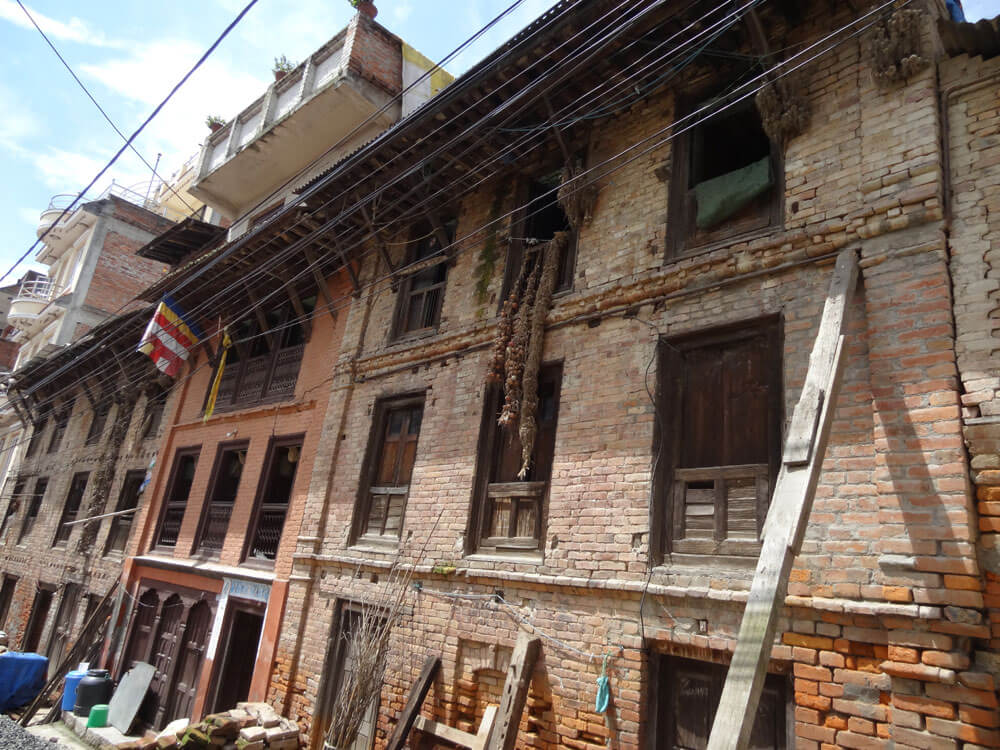
Wandering through Khokana's narrow alleys, one encounters the traditional Newari design houses, preserving the essence of the past. The village is adorned with notable temples like Sikali Temple and Rato Machendranath Temple, embodying the spiritual roots of the community.
Khokana is celebrated for its vibrant Deopokhari Jatra, featuring a captivating chariot procession that captures both locals and visitors alike. Nestled between Lalitpur and Kirtipur, Khokana village welcomes travelers to relish the charm of a bygone era while cherishing its unique heritage and cultural legacy. Khokana was very popular for mustard oil in the past; still, you can see traditional oil mills there and people's culture untouched by modernization.
26. Bungamati, the birthplace of Rato Machhendranath.
Bungamati, an ancient Newari settlement with a rich heritage, stands as one of the oldest towns in the region. Derived from the Kirati word "Bugayumi," its origins were before the Christian era, adding to its historical significance. Also known as Amarapur, this charming town is nestled in Lalitpur, offering a captivating blend of historical, cultural, and religious treasures.
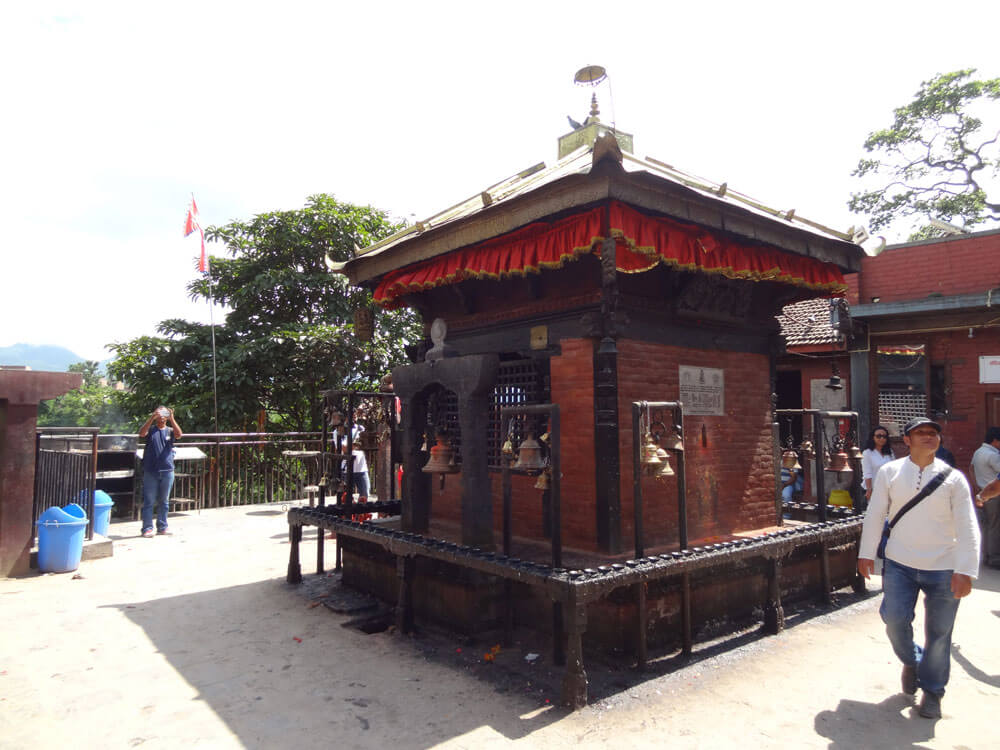
Bungamati boasts numerous temples and monasteries, each telling tales of its profound spiritual roots. Believed to be the birthplace of Rato Machendranath, the town holds a special place in Nepalese folklore and tradition. With its unique heritage and sacred ambiance, Bungamati invites visitors to explore its time-honored legacy and immerse themselves in the enchanting Newari culture and history.
27. Garden of Dreams: The Neoclassical Garden of Six Seasons.
The Garden of Dreams, known as 'Swapna Bagaicha' in Nepali, is a captivating neoclassical garden that celebrates the essence of all six seasons of Nepal. Situated within the bustling Thamel, this garden holds a special place in the hearts of locals and tourists alike due to its central and touristic location.
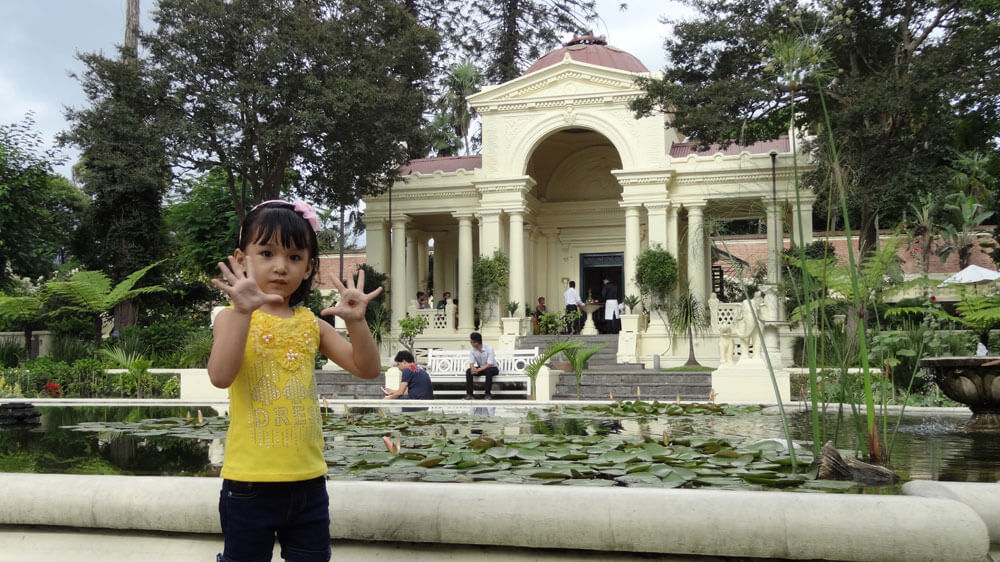
Built in 1929 by Keisar Shumsher Rana (1892–1964), the Garden of Dreams was once part of the grand Keisar Palace, now transformed into the Keshar Library. Today, this enchanting oasis welcomes visitors of all backgrounds, providing a tranquil respite from the city's hustle and bustle.
With its serene ambiance, the Garden of Dreams serves as a cherished spot to seek peace and serenity in the city. A testament to the timeless beauty and cultural significance, this garden offers a delightful escape where dreams are cultivated and the harmony of nature embraces all who wander its tranquil paths.
28. Bais Dhara—Water Garden of Balaju.
Bais Dhara, meaning "twenty-two water sprouts" in Nepali, is also renowned as the Balaju (Bala = Children + Aji Newari Language = Grand Mother = Balaji) Water Garden—a picturesque park consists of water fountains and ponds, including the iconic 'Dhunge Dhara.' Situated below the majestic Nagarjuna Hill, this enchanting garden boasts a historical legacy dating back to the Malla period, where the twenty-two water sprouts were built.
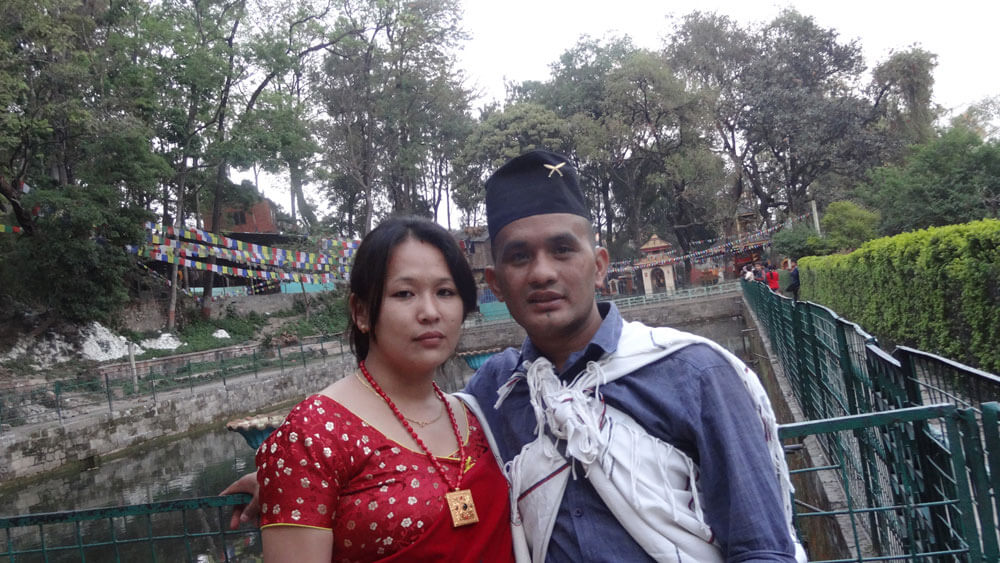
Among the park's attractions lies the Baalnilkantha Temple, a divine sanctuary dedicated to Lord Vishnu, featuring a replica of the revered Budhanilkantha statue. Bais Dhara stands as a cherished destination, where the soothing sounds of cascading water blend harmoniously with the tranquil ambiance. Its timeless beauty and cultural significance make it a treasured spot for both locals and tourists seeking moments of blissful reprieve amidst nature's soothing embrace.
29. National Museum: Nepal’s History under One Roof.
The National Museum of Nepal, also known as the Chhauni Museum, holds a significant place in the country's history and cultural heritage. Built under Bhimsen Thapa during the early 19th century, it was originally named 'Chhauni Silkhana' signifying its past role as a stone house for arms and ammunition.
As an essential hub for national archaeology, the museum's main attraction is the life-size Jayavarma, a captivating artifact dating back 1,800 years. Displaying a remarkable collection of weapons used during the war for Nepal's unification, the museum offers a profound understanding of the nation's history.
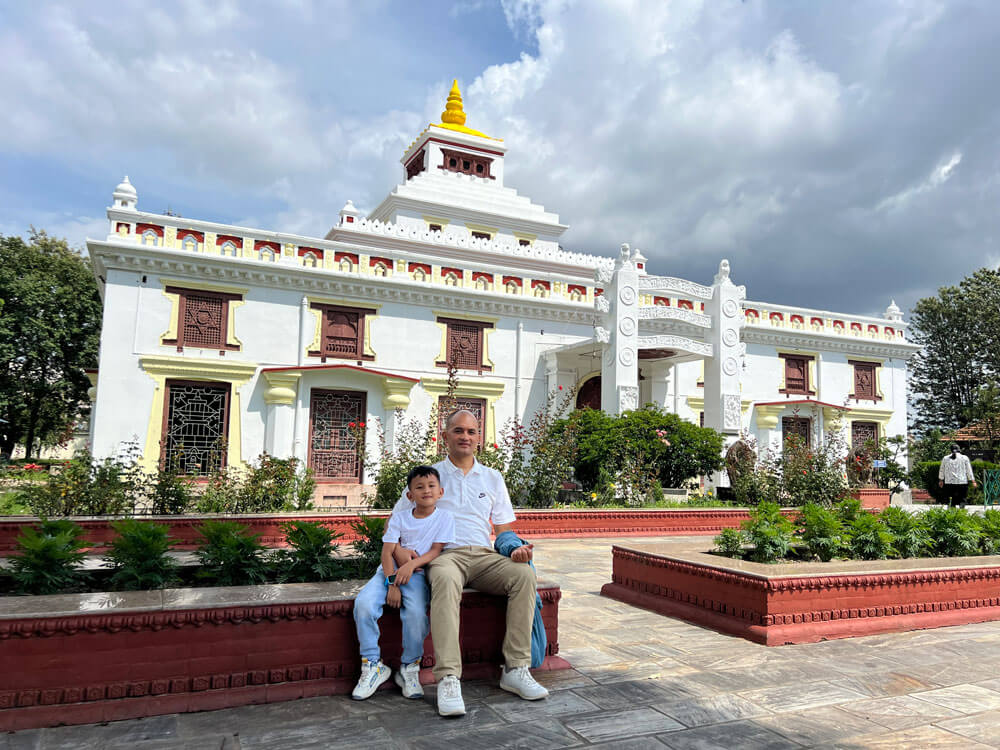
For those seeking to delve deeper into Nepal's rich past, the National Museum is a must-visit destination. Its captivating exhibits and historical treasures provide a compelling glimpse into the country's cultural evolution and the valor of its ancestors during the unification era.
30. Kritipur: Crave Yourself with Newari Cuisine and History.
Kirtipur, an ancient city nestled within the Kathmandu Valley, holds profound significance as a native settlement of the Newari people. During the Kirat era, it was known as 'Kipoo,' and its heritage endures with distinctive stacked houses that lend a unique charm to the town.
Steeped in history and religious importance, Kirtipur boasts numerous temples and monuments that showcase its rich cultural tapestry. Among these, the Bagh Bhairab temple stands out, housing weapons used during the war between Kirtipur and Gorkha.
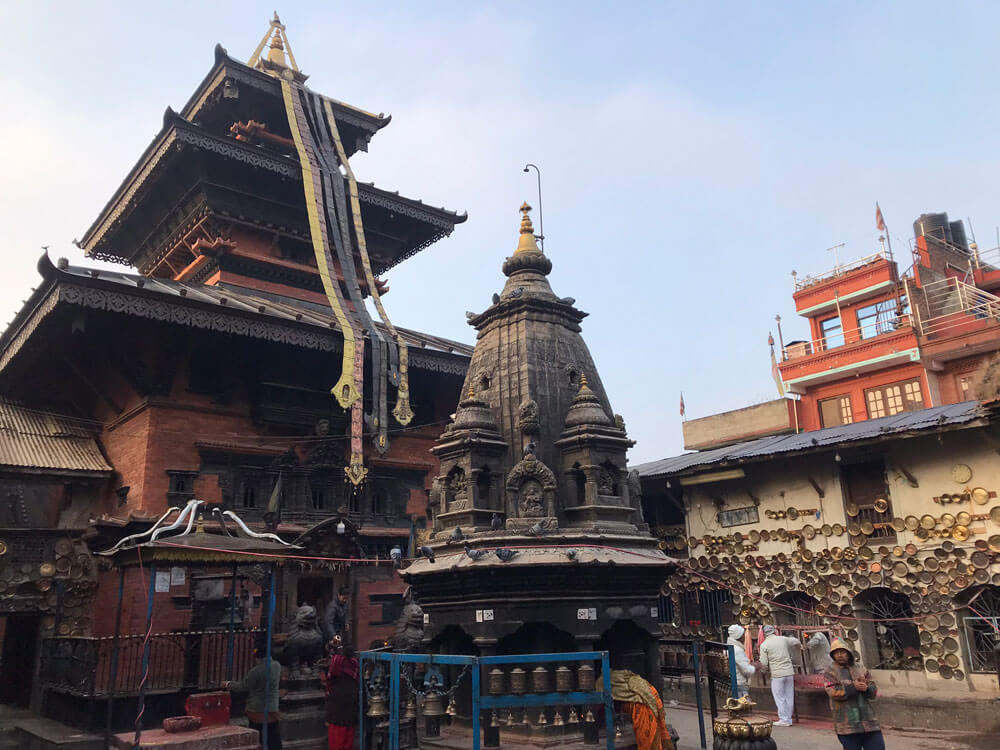
Likewise, Adinath Temple at Chobhar Dada Kirtipur, Shri Kirti Bihar Nagar Mandap, Vihara Chilanchu, Uma Maheshwar Temple, Lohan Dega (Lodegal), Yuddha Park, Narayan Temple and Dey Pukhu, Saraswati temple, and Kirtipur Monastery (where the Kagyu Institute of Buddhist Studies) are most popular attractions the Kritipur.
Visitors to Kirtipur must savor the authentic Newari cuisine, as the city is renowned for its delectable delicacies. The vibrant streets are dotted with traditional Newari restaurants. Kirtipur stands as a captivating destination where heritage and flavors intertwine, allowing you to immerse in the splendor of Newari culture.
31. Bhubaneshwori Temple: Discovering the Tranquility in the Northwest.
Standing gracefully on the hill of Jitpur Phedi in the northwestern region of Kathmandu, Bhubaneshwori Temple presents a captivating introduction to the enchanting landscapes of this area. Devoted to the Hindu goddess Bhubaneshwori, one of the ten Mahavidya goddesses in Hindu Shaktism, it is often hailed as the Queen of the Universe.
The temple provides a haven from the hectic pace of city life and invites guests to spend quiet moments in prayer and reflection. Besides its spiritual allure, the temple grants visitors a breathtaking panoramic view of the Kathmandu Valley and the rolling hills of Nuwakot on the other side, unveiling the natural splendor of the region.
Famous tourist Places in Kathmandu
Finally, here are the famous tourist places in Kathmandu. Don’t get me wrong, the list above also includes famous spots to visit. So, let's see what the famous areas of Kathmandu are:
32. Thamel: Nothing like Anything.
Thamel, an iconic name that needs no introduction, stands proudly as one of Nepal's most renowned tourist hubs. With its vibrant atmosphere, this lively neighborhood entices visitors with an array of vendors offering handcrafts and antiques, while an abundance of hotels and restaurants serve cuisines from around the world.
Thamel is a paradise for those seeking relaxation and excitement, as it boasts numerous places to chill, hang out, and revel in the city's best nightlife. Nestled at the heart of Kathmandu, Thamel's magnetic charm continues to captivate travelers from far and wide, making it an essential destination for anyone exploring rich Nepal's cultural and urban experiences. Most of the hotels, restaurants, bars, spas, trekking gear shops, and travel and trekking offices are in the Thamel area. If you are looking for a high Himalayan experience, then you may go to Everest Base Camp Trek, Annapurna Base Camp Trek, and Manaslu Circuit Trek through those trekking agencies.
33. Narayanhiti Royal Palace: Relieving Nepal’s Monarchical Era.
Narayanhiti Durbar, a former palace of the Shah dynasty, holds a fascinating history within its walls. King Mahendra commissioned its construction in 1963, desiring a distinctive and modern design, which led him to enlist American architect Benjamin Polk. The name "Narayanhiti" combines "Narayan," denoting Lord Vishnu, and "Hiti," meaning water sprouts in Newari.
Following the 2006 revolution, the palace transformed into a museum, inviting all to explore its regal past. Now open to the public, visitors can immerse themselves in the royal experience, delving into the fascinating lives of Nepal's monarchs. Narayanhiti Durbar stands as a timeless monument to Nepal's historical legacy, offering a glimpse into the nation's rich cultural heritage and royal traditions. The late King Birendra Bir Bikram Shahadev's family was massacred in this place.
34. Durbar Marg: A Melody of Luxury and Elegance.
Durbar Marg, meaning "Street of the Palace," stretches gracefully in front of the illustrious Narayanhiti Palace. This prestigious street has earned a reputation as a haven of lavishness, showcasing an abundance of luxuries that have made it a trademark of indulgence in Nepal.
Lined with franchise hotels and upscale restaurants, Durbar Marg offers an array of fine dining and exquisite culinary experiences. Fashion enthusiasts are drawn to its elegant boutiques, which house premium clothing brands that epitomize style and sophistication.
Situated just beside the bustling Thamel area, Durbar Marg stands as a must-visit spot for locals and tourists seeking a taste of luxury and refinement. With its lavish offerings and grandeur, this iconic street invites visitors to revel in a world of extravagance, leaving an indelible impression of grand living and upscale experiences.
35. Freak Street: Tracing the Hippie Nirvana.
Freak Street, located on the west side of Kathmandu Durbar Square, holds a fascinating history dating back to the 1960s era. In those days, it became a heaven for hippies, who flocked to this street, making it a paradise of free spirits. During that time, cannabis (marijuana or Ganga) was legally sold here, which eventually led to its name, Freak Street.
Though cannabis is now illegal in Nepal, Freak Street remains a top spot for both tourists and locals alike. The street is brimming with an array of restaurants, some with splendid rooftop views of Kathmandu Durbar Square. It's the perfect place to unwind, dine, and chill, offering a unique blend of history and modern charm that continues to attract visitors seeking a taste of Kathmandu's broad and vibrant culture.
36. Asan Bazaar: The Alley of Trading.
Asan, a narrow street nestled between the Thamel and Basantapur Durbar Square regions, is a bustling marketplace that reflects the vibrant spirit of Kathmandu. Dominated by the friendly Newari people, this lively street is adorned with houses, street vendors, shops, and charming alleys.
Asan is a hustling market where you can find almost anything you desire, but it shines as the go-to destination for buying an array of aromatic spices. The street is always busy with activity, bustling with countless people going about their daily business.
For locals, Asan is a vital market where they can find daily essentials and delights. Besides its commercial charm, Asan boasts some important temples, such as Seto Machhendranath Temple and Annapurna Temple, adding a spiritual touch to this dynamic street.
37. Kathesimbu Stupa: The Hidden Quest of Kathmandu.
Kathesimbu Stupa, hidden in the cozy alley of Thamel, is a charming square adorned with Chaityas, Stupas, and temples. It is also home to the grand Buddhist Durgen Jangchu Monastery. With a lively atmosphere of worshippers, kids playing, and young people hanging out, this peaceful location is ideal for enjoying a cup of tea and relaxing.
The vibrant vibe extends to the nearby small shops, offering delectable Tibetan dishes and refreshing ice cream. Not far away, you'll find the famous Tip Top Samosa outlet, renowned for its mouth-watering samosas. Kathesimbu Stupa is a delightful haven where you can immerse yourself in the essence of Thamel's cultural charm while savoring its diverse culinary delights.
38. Siddhartha Art Gallery: Unveiling Nepal’s Artistic Heritage.
Sangeeta Rana Thapa established the Siddhartha Art Gallery in 1987, and it has been a significant part of Nepal's art scene for more than 35 years. With an impressive record of hosting more than 500 art exhibitions, it showcases a diverse collection of art forms, not only from Nepal but also from international artists.
This renowned art gallery holds a special place in the hearts of the nation, being a source of pride for the country. Housed in a building adorned with medieval architecture inspired by Nepal's rich heritage, the gallery offers a charming lounging area for visitors to sit back and relax.
A haven for art enthusiasts, Siddhartha Art Gallery continues to captivate visitors with its ever-evolving exhibitions, making it a must-visit destination for anyone seeking to immerse themselves in Nepal's vibrant art and cultural landscape.
39. Lazimpat: The Heart of Urban Buzz.
Lazimpat, a flourishing area in Kathmandu, shares an international vibe that entices visitors from all walks of life. Located just a few kilometers away from Thamel, this bustling neighborhood is known for its vibrant atmosphere and VIP appeal, with many star-level luxury hotels.
With numerous hotels and renowned restaurants, Vegas offers a diverse culinary experience, from sports bars to casual pizzerias. It also boasts showrooms featuring various aspects, including Nepali clothing brands, catering to every taste.
Amidst the urban buzz, Lazimpat's main attraction is Lazimpat Durbar, adding a touch of history to the modern landscape. For those who love city vibes and a dynamic ambiance, Lazimpat is a must-visit destination, promising an unforgettable experience in the heart of Kathmandu.
40. Nagarkot: Chasing Panoramic Vista.
Nagarkot, the jewel in the crown, lies on the outskirts of Kathmandu, making it a must-visit destination during your stay in Nepal. Nestled amidst the hills, Nagarkot offers a breathtaking panoramic view of the majestic Himalayan range, a sight that leaves visitors in awe. Renowned for its mesmerizing sunrise and sunset views, it presents an ideal day trip or a delightful escape for multiple nights. To visit Nagarkot, you can extend your trip with Chisapani Nagarkot Trek and Nagarkot Dhuliikhel Hiking.
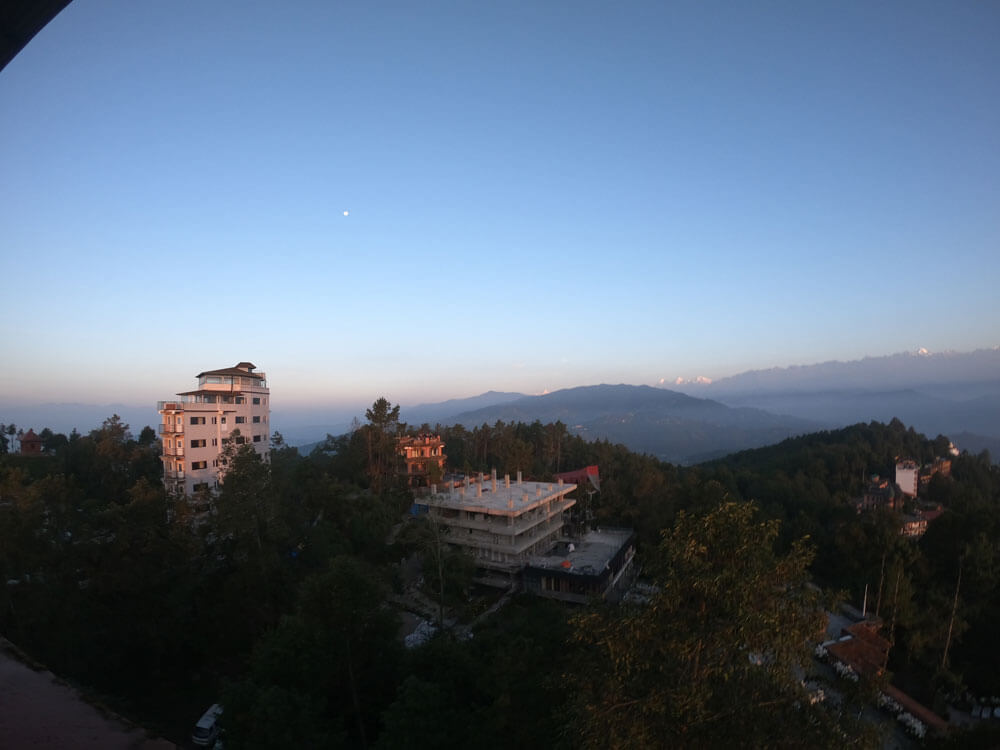
The tranquil ambiance and hiking trails make it a paradise for nature enthusiasts and adventure seekers alike. Beyond the stunning landscapes, Nagarkot provides an authentic glimpse into the charming village life of Nepal, offering a unique cultural experience. With its picturesque setting and captivating vistas, Nagarkot ensures an unforgettable journey, leaving travelers with cherished memories of their time amidst the awestruck beauty of the Himalayas.
Conclusion
These are some of the finest places to explore on your next trip to Nepal, all situated within the Kathmandu Valley. Speaking of the Kathmandu Valley, it encompasses Kathmandu, Lalitpur, and Bhaktapur. So, make a thoughtful choice about the place you wish to visit in Kathmandu. If you need any help visiting these historically significant places in Kathmandu or Nepal, feel free to contact us at Nepal Mother House Treks; we will be glad to organize it for you. Until we meet again,
